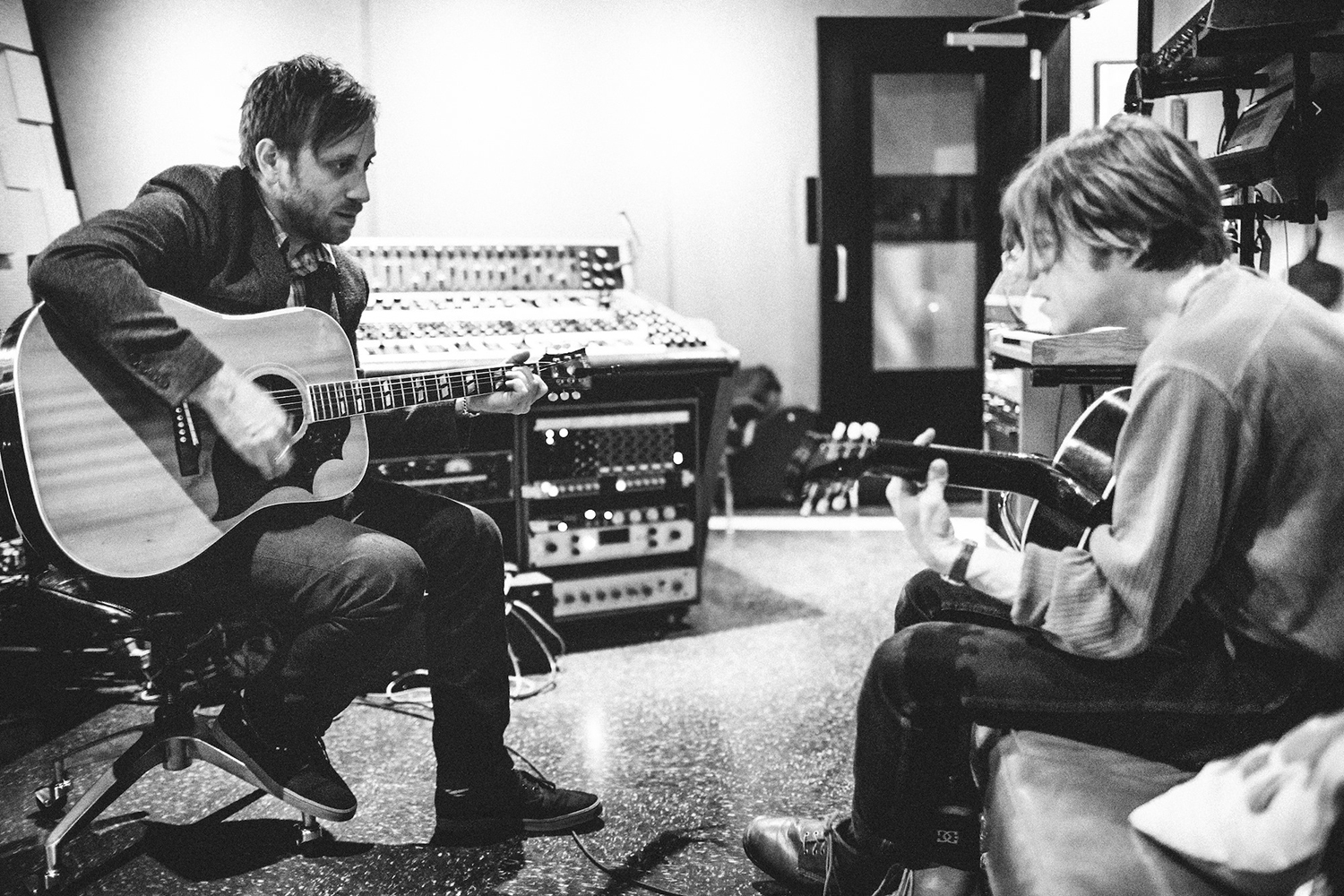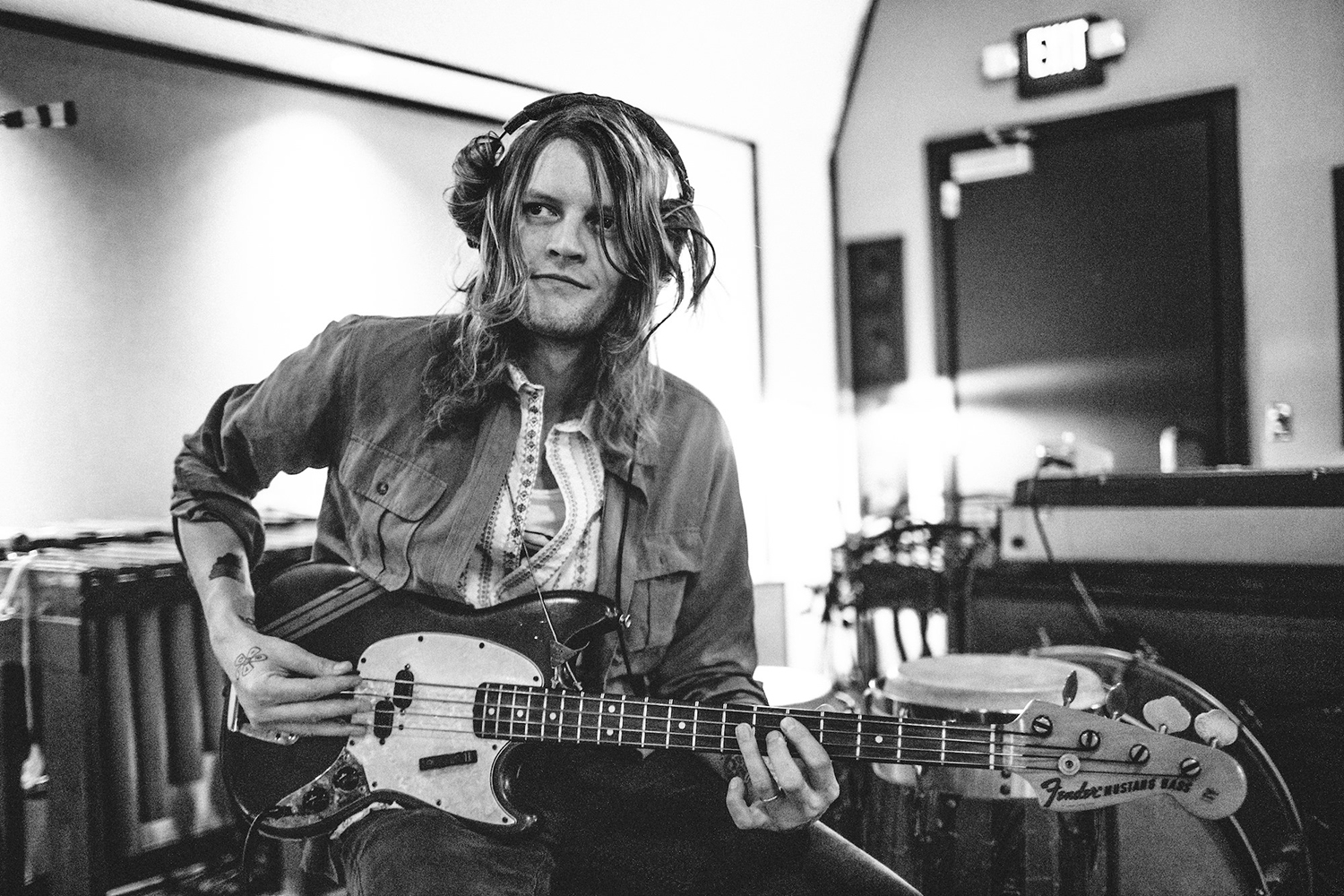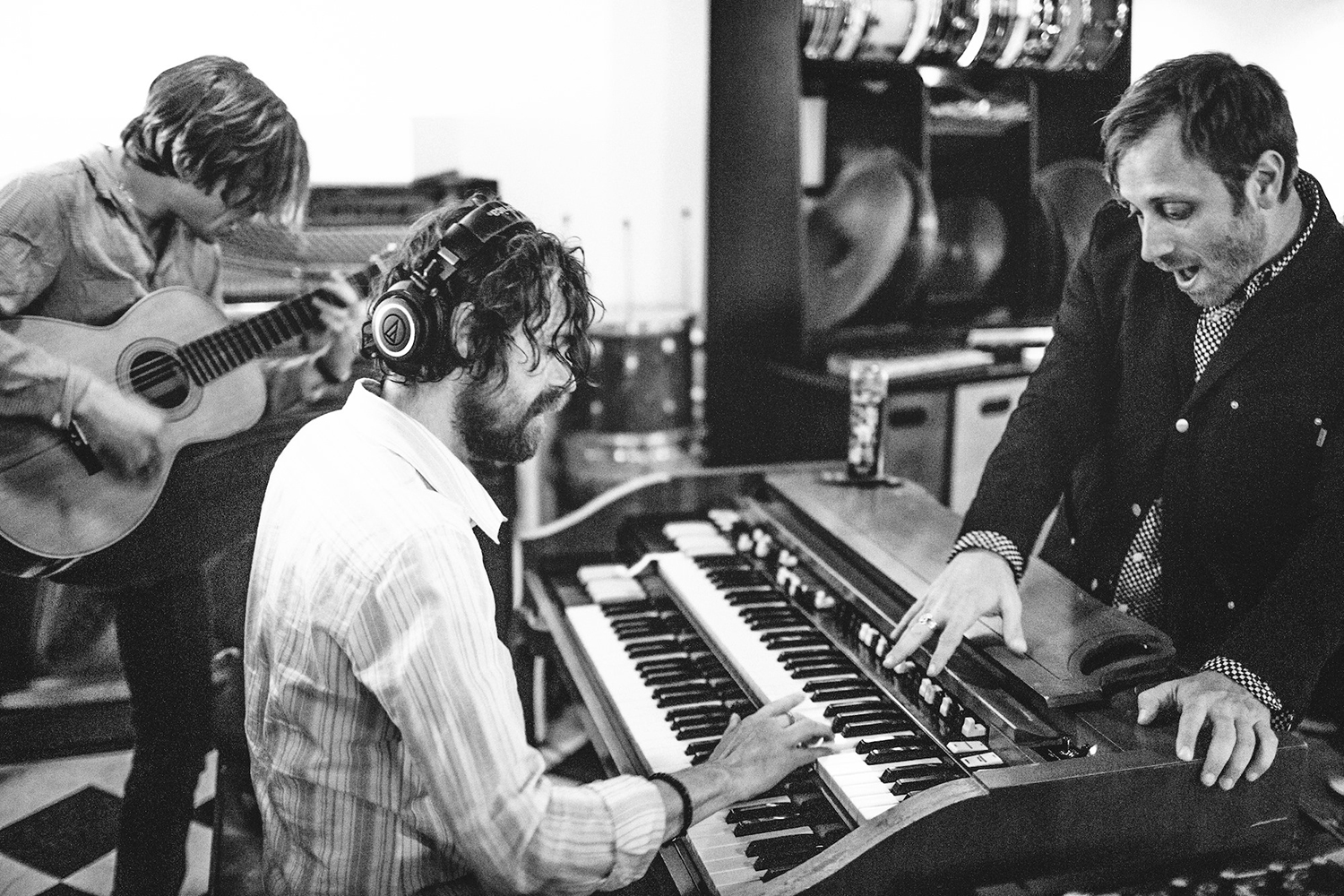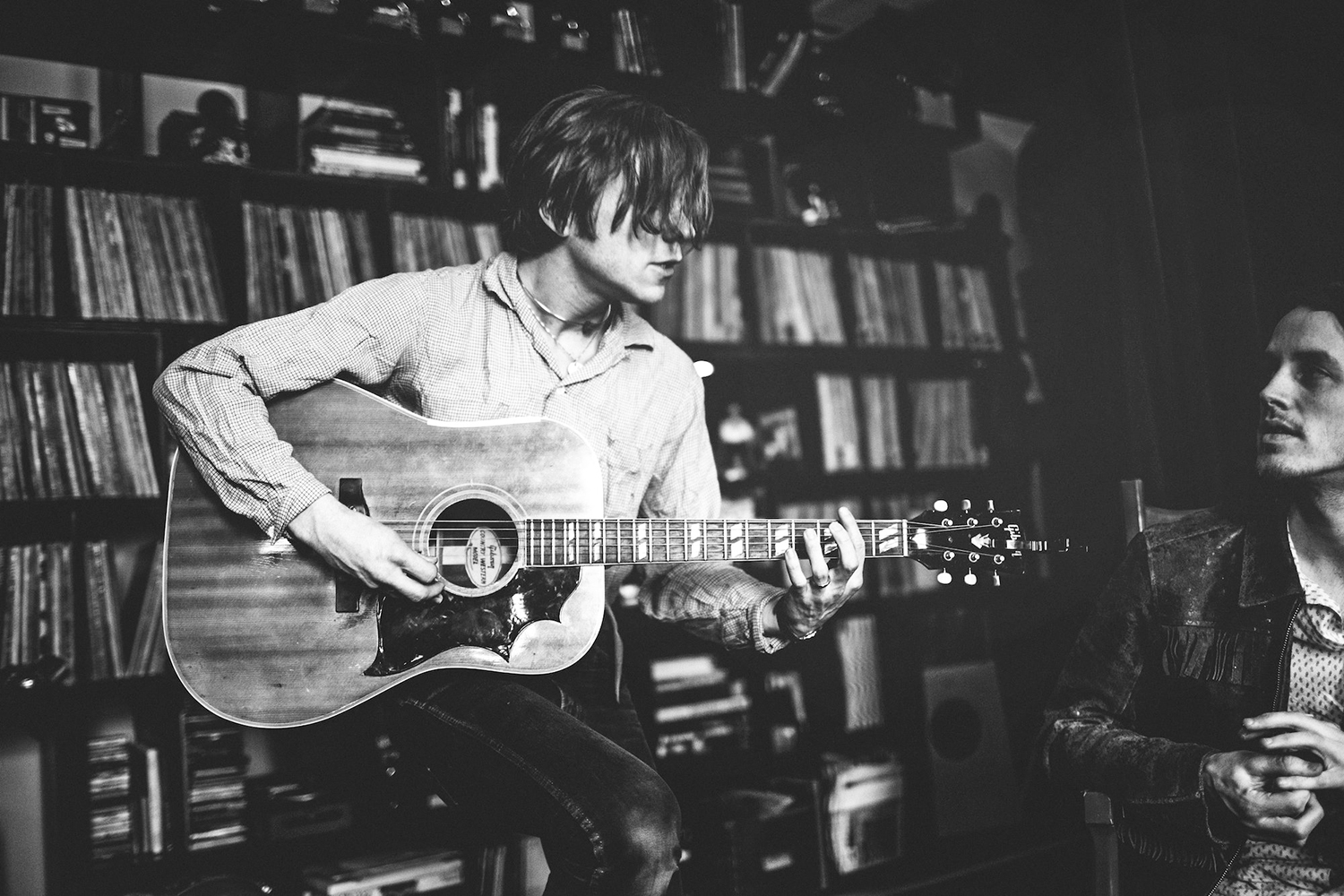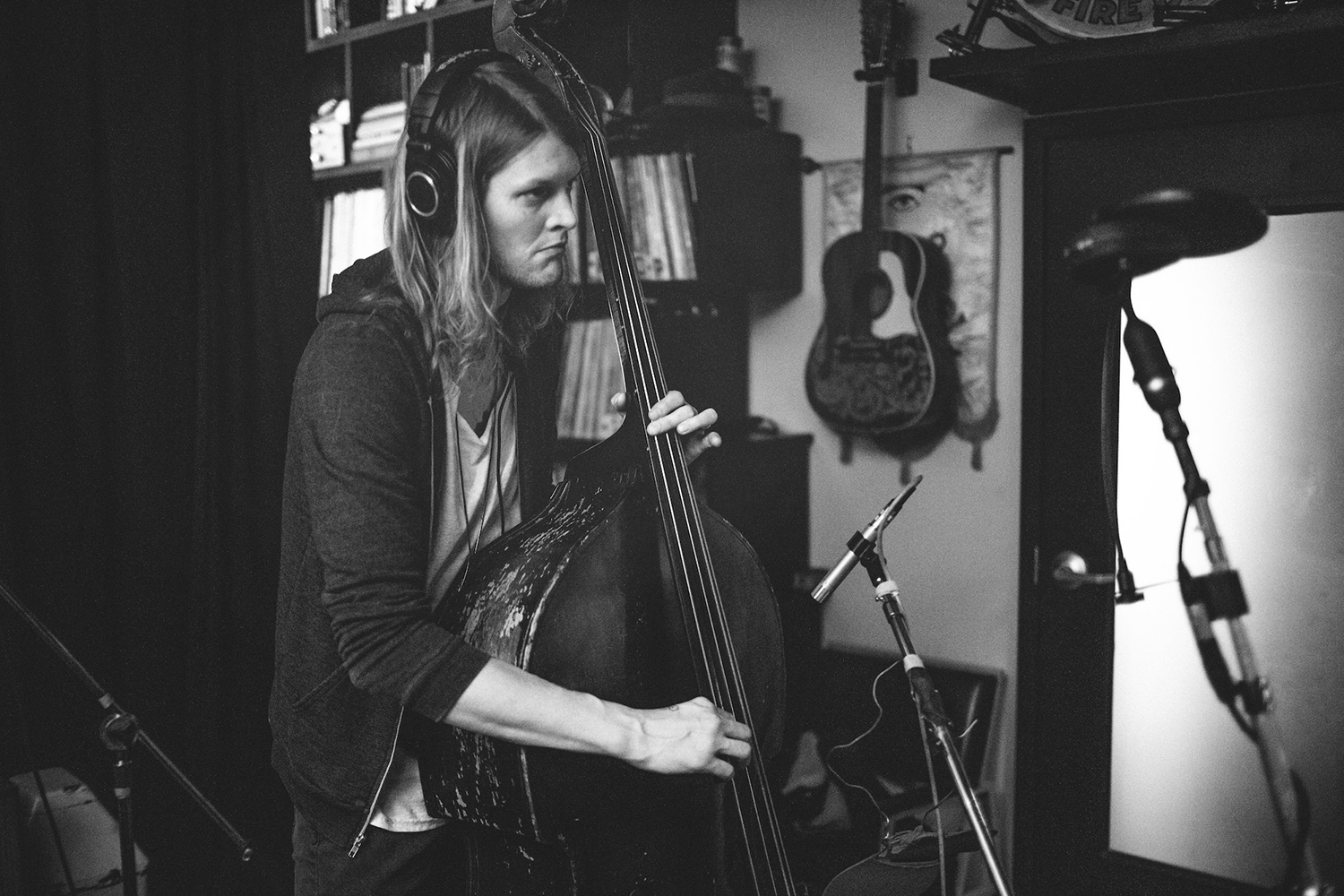“Without compromise, we want to hear everything that’s contributing to the sonic landscape.”
When you want to take it to the next level, you bring in the big guns. And that’s exactly what kinetic Kentucky indie rockers Cage the Elephant did for Tell Me I’m Pretty, enlisting Black Keys wunderkind Dan Auerbach as their producer. Result: Pretty, out today, is a beautifully realized modern record framed with a timelessly classic vibe, from the fuzzed-out overdrive of Mess Around to the trippy echo-chamber rush of Trouble to the off-kilter Tusk-like tribal riffery of Punchin’ Bag.
Pretty’s palette builds off of the transcendent territory Cage staked with the slide rap of their first hit, Ain’t No Rest for the Wicked (from their 2009 self-titled debut), as well as the shimmery acoustic smolder of Cigarette Daydreams and the slithery come-hither push of Come a Little Closer (the latter two tracks from 2013’s massive breakthrough, Melophobia).
Cage lead singer Matt Shultz agrees working with Auerbach upped the album’s aural ante. “There was definitely a good deal of discussion about our sonic goals, but to be honest, most of it was instinctual,” Shultz reports. “I think we both had a similar mind for what it was that we wanted to do, and in places where maybe our vision was different, we found some really nice middle ground.”

Auerbach helped nurture the band’s growth in the studio by having Cage put the songs first. “With each song that we do, I think we try to take ourselves out of the equation,” concurs Shultz. “What I mean is, Dan is such a reactive producer, and one of the places he was most impactful on the record was enabling us to get out of our own way and allow the songs to take on their own lives and their own personalities. I never felt the responsibility to cater toward a specific sound that was ‘our personality,’ or whatever.”
Digital Trends caught up with Shultz on the eve of the album’s release to discuss the influence streaming services had on its creation, finding the right ways to harness sonic depth, and how to keep emotions real in songwriting. The verdict: Pretty, pretty good.
Digital Trends: So, Matt, I am going to tell you you’re pretty, because I think you guys did a great job of making an album that sounds equal parts modern, classic, and timeless.
Matt Shultz: Thank you. Well, honestly, one of the goals for this record — and the thing we kept talking about — was to have a certain timelessness and classic sound to it. Something big I attribute to this idea is what we feel about all of these streaming services that are now emerging. A lot of them offer educational services or discovery modes. For instance, with Spotify, you can go on Spotify Radio and go into Discover mode through algorithms that are based on your musical choices. And they’ll start to send you artists and bands that you might be into.
Because of all that, I think some of these terms that we’ve heard, like “retro” or “throwback,” aren’t even relevant anymore because it’s hard to say what a “contemporary” sound is anymore. All of a sudden, Nina Simone is really important again, you know?
It’s a pretty interesting time — and it’s pretty exciting too. I’m glad that it’s finally happening, and that it’s more based on history and culture and less on the commerciality of music.
I’m with you on that. I pay for the Spotify Premium service, because I want to make sure artists get a little something out of it, at least. So, in general, you’re cool with the streaming idea?
Yeah, especially if we figure out a way where artists are paid in a very fair way, it could be incredible for music. If not, then we’ll all be a subscription service! (both laugh)
Hopefully, people aren’t making music solely for monetary gain. There’s nothing wrong with supporting yourself with that gift, but it’s going to be a pretty interesting and exciting next couple of years. The next 10 years should be really something.
Agreed! Plus, we have so many different ways of listening now. Do you care about things like high-resolution audio, since there are so many layered and subtle textures evident in the mix of this record?
We did go into the mixing and mastering of the record with the intention of leaving as much headroom as we possibly could. One of the lost arts in record-making is the spacing in tracks. With the volume war that’s been around for the past 20 or 30 years, records have just been squashed flat.
“A lot of the emotion you’re hearing on the record is real.”
We were just trying to figure out a way to create a record that has a lot of attack and sonic depth. Certain musical styles are viewed more as a contemporary sound, or electronic-based music — well, that is pretty much all music these days. It’s all electronically based, technically speaking.
Without compromising the spacing and the texture, we wanted to hear everything that was contributing to the sonic landscape. I don’t know how well we did it, but there was a push-and-pull compromise, just trying to find that sweet spot.
Well, I think you guys succeeded, especially on a track like How Are You True. I love that subtle acoustic intro, and then we get some dynamic range activity in the middle before it reverts back to the acoustic mode. We really feel the emotion in your voice when you’re doing all those “uh-huh”s and the way you’re breathing at the end of the song.
Thanks. That was one of the songs that was actually only one take.
Wow — just one take, and that was a direct cut/print? Man. We can really feel what you’re doing there.
Yeah, it was really interesting to me. I was battling a fit of depression at the time as well and didn’t have a lot of great perspective when we were recording it, so a lot of the emotion you’re hearing on the record is real. (chuckles)
Did you feel at any point you were being too raw and too real?
That was the thing, I think — I had to be convinced that we were going in the right direction. When I was younger, I put so much stock in the persona, and I used a lot of characters and styles as protection from being overly held accountable for any honesty or emotions present in any of the songs.
As the years have gone on, I’ve just been trying to shed those characters and shed those stylistic safeties. The funny thing is, when you finally do that, it sounds good on paper, but if you have really deep-seated self-hatred, it’s really difficult! (chuckles)
So you have to kind of remember the beginning stages, like whatever moment of spontaneity as it occurred on the song and whatever initial emotional response that it provoked. You have to remember that it comes from a real place, and that’s the only thing that will pull you through.
You sound to me like you’re in a pretty good space with everything now. Are you?
Yeah, I am.
OK, good. And I’m glad you’re sharing all this, because a song like Too Late to Say Goodbye reflects those emotions you just mentioned. And other songs like Portuguese Knife Fight and Punchin’ Bag are about as direct as it gets.
Funny story about Punchin’ Bag. There was a day in the studio my brother Brad [Shultz, Cage the Elephant’s guitarist] was being overly heavy-handed about the decisions that were being made, and it was driving me insane! So I wrote the song Punchin’ Bag about being the punching bag, you know? (laughs) I went on to change the story to it being about a battered woman, which I thought was a more interesting concept than being just about having a fight in the studio.
So you guys aren’t turning into Noel and Liam, the Gallagher brothers of Oasis? Is that what you’re telling me?
No, we’re not that! (both chuckle)
Are you a vinyl guy? Do you listen to vinyl these days?
Yeah, I definitely do, for sure.
What was the very first record you got that impacted you when you were growing up?
My very first record… (pauses) My first musical crush was Bob Dylan. When I was younger, I got a couple of [Rolling] Stones records. This was right around the time The Strokes and The White Stripes were breaking.
“Hopefully, people aren’t making music solely for monetary gain.”
I used to watch music videos every day after school at my grandmother’s house. One day, I was sitting there, and The Strokes’ video Is This It came on, and then right after that, it was The White Stripes, Fell in Love With a Girl. And I remember thinking, “Wow. It’s changed. Everything has changed. Nothing will ever be the same.”
So I went out and bought The Strokes’ Is This It (2001) and a Stones record, which might have been Let It Bleed (1969), and I also got The Freewheelin’ Bob Dylan (1963). But to be honest, when I first listened to Bob Dylan, I didn’t see the beauty in it. I went through this phase where I was listening to The Strokes and The Stones, and I put the Dylan record to the side. And then I watched a documentary, but it wasn’t No Direction Home (2005)…
I’ll bet it was Dont Look Back (1967), the black-and-white documentary shot by D.A. Pennebaker, where Dylan’s touring England solo and acoustic in 1965.
Yeah, that’s right, it was Dont Look Back!
I just talked to Pennebaker, actually — he’s still pretty sharp at age 90.
Wow, oh my God, that’s amazing! My dad had a copy of it on VHS. I moved in with him after I had gotten kicked out of school and was sent to a disciplinary school near the high school. We watched that tape together, and I remember I cried, because I was so impacted by it. From then on out, I was just fanatical about Bob Dylan.
Do you have a favorite Dylan record, or song?
I think The Lonesome Death of Hattie Carroll [from 1964’s The Times They Are A-Changin’] is my favorite Dylan song ever. I love the fact that he took a real story from a newspaper and then wrote this linear song that had a beginning and an end, and it had such a heavy moral fiber to it. It addressed a lot of issues without pointing a bold finger at any specific thing.
It’s definitely one of the songs that made me realize the intentionality of songwriting is everything. You’ll hear some writers who write lyrics to position themselves as being “poetic,” and then there’s people who speak honestly and intentionally, and that’s what’s poetic. You know what I mean? I think it’s one of the greatest songs ever written.
